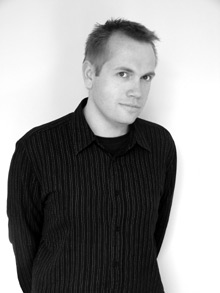Laneway Festival 2014
RNA Showgrounds, Brisbane
Friday 31 January 2014
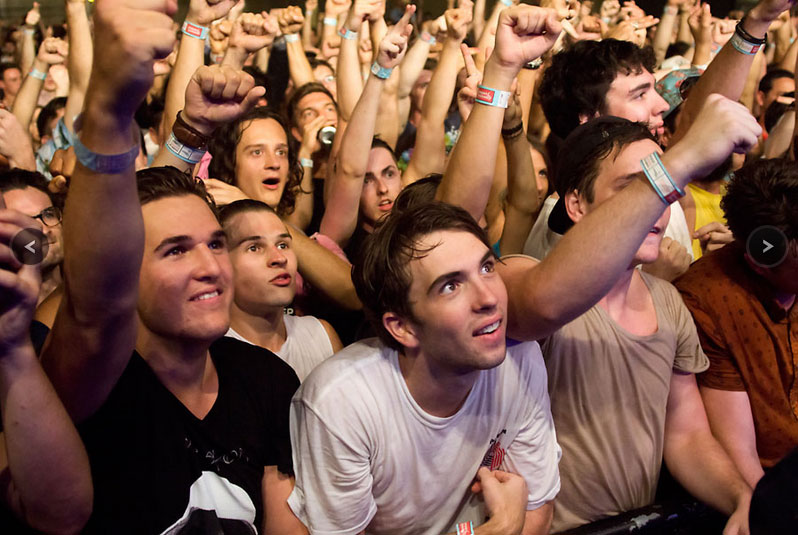
We sent our music men Andrew McMillen and Matt Shea along to Australia’s first Laneway Festival of 2014 at the RNA Showgrounds in Brisbane on January 31. This is their story, just please be advised the following contains tales of creepy stalking, swearing and mid-strength Mexican beer….
Andrew McMillen: How do you sell tickets to music festivals? Amid reports of a horror 2013 for promoters throughout the country, with cancellations, downsizing and low attendances almost across the board, the answer to that question has remained the same as it ever was: book bands that people want to pay good money to see. It’s simple in theory but tricky in practice, with a good deal of gambling and gamesmanship required many months in advance. In this sense, Laneway has struck a vein of pure gold in 2014: their line-up is stacked with in-demand artists, many of whom performed strongly at a certain music poll that aired five days prior to the touring festival’s traditional first Australian show in the Queensland capital.
Matt Shea: My question is, how do you improve upon the Brisbane leg of Laneway, which was one of the best festivals to blow through the city in 2013? You upgrade the line-up for starters. If last year’s roster of artists was impressive, 2014 is a clean home run with the inclusion of superstars Haim and Lorde, a strong slug of rap courtesy of Run the Jewels, Danny Brown and Earl Sweatshirt, and an almost never-ending list of support players: Daughter, Four Tet, Kurt Vile, Warpaint, and god knows how many more. The festival app’s planner is pretty much useless. There are clashes everywhere. Thanks, arseholes.
That’s from the audience perspective. From promoters Danny Rogers and Jerome Borazio’s perspective, you increase capacity. Which, given the ample space available at Brisbane’s RNA Showgrounds, makes a lot of sense. But does it make sense for Laneway?
Laneway’s submission to do the same in Sydney was rescued by an eleventh hour plea from Michael Chugg — who co-promotes the festival — when he told Leichardt Council that no other Australian music festival quite has the same capacity to connect with music fans. But by bumping up the numbers, Rogers, Borazio and their collaborators are of course risking such a hard-won note of distinction. In it’s first year in Melbourne back in 2004, the gents were cheerily selling tallies and inviting their parents along. In 2014, we’re talking something much more widescreen.
To accommodate the extra numbers, the RNA Showgrounds setup has been re-jigged. The Carpark Stage (better than it sounds) is no longer the place to see the biggest acts. Instead, it plays second fiddle to the Alexandria Street stage, which in a daring move during Brisbane’s monsoon season, is completely open to the elements.
And those crowds don’t go unnoticed. Whereas in 2013 it was easy to get around, this year you often find yourself caught in great swathes of people, many of them careening into each other as sticky weather and over imbibing combine to nasty effect. After a while you find yourself wondering if this is what Laneway is all about. I’m not so sure.
Andrew: Fittingly, the site is busy within a few hours of gates opening, as must-see acts have been scheduled from the early afternoon onwards. Up first, King Krule is a swing and miss at the Carpark Stage: the English songwriter is interesting on record, but unengaging in the flesh. To my dismay, a quick scout around the three other stages yields no alternatives, which seems like surprisingly poor organisation for so early in the day. King Krule delivers that rare, unedifying type of set that turns me off a band that I already liked. Adalita at the Alexandria Street stage is the exact opposite: alongside her three accomplices, she reminds me that I need to spend more time with her 2013 album All Day Venus. Their performance of the title track is the first great song I hear today, thanks to a monstrous extended outro. “I’ve got a touch of bronchitis,” the singer says. “But I’ll do my best. Fuck that excuse!” It’s clear during a solo reading of ‘Heavy Cut’ that her voice isn’t doing quite what she’d like, yet Ms Srsen powers through anyway. Heroic.
A few songs into Adalita’s set, I clock the unmistakeable visage of triple j Music Director Richard Kingsmill standing before me, clutching a brown jacket and wearing a navy shirt, blue jeans and orange shoes. He shields his bespectacled eyes from the glaring sun and adopts a power stance, rocking his right leg to the beat of the bass drum with crossed arms.

The more avid conspiracy theorists of the Australian music scene would have us believe that Kingsmill ultimately decides which bands have careers in this country and the circumstances in which they succeed. No one man should have all that power, they posit, to crib a Kanye line. I watch him rub his chin and lean into the power chords that blast through the speakers. Momentarily, an enthusiastic blonde girl jumps onto a male friend stood before Kingsmill; he takes a swift step back in response, but it appears that the spell has been broken. The man with the golden ears flees in haste, as if he just remembered he had somewhere else to be.
By sheer coincidence I clock him again at set’s end, over by the food stalls while I buy a cup of lemonade. He’s using chopsticks to eat from a cardboard box while chatting to a fellow radio presenter. Since I have nothing better to do, I follow him to an indoor stage sponsored by an energy drink company. Tracking an individual through a crowd of hundreds is a new thrill; I feel like Jason Bourne or some shit. It’s so loud in here that I apply earplugs immediately. Kingsmill doesn’t. I’m leaning against a steel barrier before the sound desk, watching him watching… I don’t even know who. It doesn’t matter.
I have spoken to him before, once, years ago, for a version of the played-out “Does triple j have too much power and control over the artistic fates of music in this country?!?!” story that was resurrected in the Fairfax press earlier this month, to much navel-gazing and hand-wringing among those who care about such things. Then, as on the air, Kingsmill struck me as an unashamed music geek; an obsessive who just so happens to be paid to be immersed in the art that he loves. Nothing I see here diminishes that impression. Ten minutes later, I stalk him back out to the Alexandria Street stage, where Vance Joy has attracted a huge crowd.
Kingsmill remains unmoved throughout the performance, often deferring to the smartphone kept in his left jeans pocket. He remains still as a statue even when the crowd around him erupts for ‘Riptide’. Perhaps he, like I, finds nothing of value in their music. I wonder at that feeling, though, of being at the centre of a love-in for a performer and a song that, without triple j’s support, nobody would have heard. Without certain decisions being made by triple j staff, this crowd of thousands certainly wouldn’t be singing along to every word while waving a can of imported Mexican beer in the air.
I can’t wrap my mind around this last point: the only mid-strength beer on sale is a brand I have never seen or even heard of before today. It’s called Alegria, it’s in a bright yellow can, and its contents are best summarised by a friendly guy I meet late in the day, “It tastes like 50% Corona, 50% Mount Franklin”. (He said this after drinking six of them and right before tipping half of number seven over his head without provocation). I respect the Laneway organisers for bucking the overwhelming festival trend of selling tinnies of Carlton Dry, but how they settled on this piss-poor home-brand swill as a replacement is beyond me. Must’ve gotten a sweet bulk deal from a likeable Mexican exporter.
Matt: What the fuck is Vance Joy doing here? Not at this festival, but on this stage, at this time. I ask myself this despite actually enjoying the Melburnian’s set. It’s just that there’s really not much to it. Simply Vance out front singing sweetly while drums, keyboards and bass propel him along. Every song’s a winner — particularly ‘Red Eye’, ‘Perfect Teeth’ and a new cut called ‘All I Ever Wanted’ — but every song also goes on for too long. Vance is fine, the band is fine, it’s all just fine. There’s no intimacy and no electricity, and you soon start wishing you were in a club at 10pm rather than on a massive apron of bitumen. It’s a pleasant way to start the festival, I guess, but this just doesn’t seem the setting for Vance.
My mind wandering, I turn around towards the sound booth and catch a glimpse of what I think is Richard Kingsmill and behind him a blue t-shirt. Quality stalking, A-Mac, you fuck.
We stay for the Hottest 100-winning ‘Riptide’ — which at least partly answers the stage question — and it means we get to watch a healthy crowd lose its collective shit. But it also means we miss most of Daughter, which I feel is a mistake. When we get to the Carpark Stage, the London three-piece is blowing everyone away with a peerless take on ‘Winter’. Diminutive singer Elena Tonra’s lyrics can barely be discerned from the noise but it hardly matters: most interest can be found in the great washes of sound being swapped between guitarist Igor Haefeli and a touring multi-instrumentalist.
We’re there long enough to witness cracking renditions of ‘Candles’, ‘Human’ and ‘Tomorrow’ – each an exercise in precise control over Daughter’s surging song craft — before Tonra icily coos her way through ‘Home’, the audience going apeshit. And then they’re done. Haefeli thanks the audience profusely and then Daughter disappear, leaving us feeling like dickheads for getting there so late.
Andrew: Upstart American electronic producer XXYYXX plays an interesting set at the energy drink stage, though he tends to shy away from a consistent backbeat, leading to some equally interesting interpretive dances. A young girl is passed out on her side out on the edge of the room, not far from the speakers. A caring photographer stands guard while a security guard seeks medical attention and I look on, concerned. An idiot in a singlet runs up and takes a selfie in front of her prone frame, before returning with some mates for a group shot. Taking in this scene, it’s tough to imagine a better image of the selfishness and callous indifference for which my generation is supposedly renowned. Ten minutes later, she’s helped to her feet by a stranger; she runs unsteadily for a few metres before falling into the arms of two paramedics, who ask her name and lead her gently toward the exit.
It’s not until I join the horde crowding the main stage at Alexandria Street for CHVRCHES that I realise how crap this space is to watch bands. It’s essentially a flat bit of bitumen flanked by two small grandstands; one side is slightly raised, thanks to some thoughtfully-placed woodchips, but when the area is busy – as it is from Vance at 3.45pm through to headliners The Jezabels – it has about as much ambience as the average suburban garage. Maybe I’ve been spoiled by recent experiences at natural and manmade amphitheatres at Falls Festival and the Big Day Out, respectively. All of this detracts from the otherwise serviceable set that CHVRCHES put in, though the thinness of their live sound – due in large part to the programmed drums, I think – reminds me of Sleigh Bells, another act with strong songs on record that fall flat before an audience. To their credit, ‘Lies’ is one of the best songs I hear all day, though.
Matt: Pro tip: if you like CHVRCHES, maybe don’t see ‘em at a music festival. The Glasgow three-piece bring plenty of firepower to the Alexandria Street Stage, but much of the mystery that surrounds these electro-indie rockers is lost in an odd late-afternoon setup that has keyboardists Iain Cook and Martin Doherty on a couple of risers that flank an already tiny Lauren Mayberry. From this distance she looks like Chloë Moretz. It’s pretty hilarious. You couldn’t accuse these guys of not giving it 100 percent, but in this wide-open setting it feels like they’re shooting blanks. Still, songs such as ‘Lies’, ‘The Mother We Share’ and the Doherty-sung ‘Under the Tide’ have an impact — the latter providing a much-needed mid-set injection of energy. I was already lukewarm on CHVRCHES, and this set has done nothing to help my appreciation. Still, if it was more 11pm and less 5pm, my opinion would probably be different.
Andrew: Kurt Vile at the Carpark Stage is nothing less than sensational: opening with the ten-minute title track from Wakin’ On A Pretty Daze, his winning album from last year, Vile and his three offsiders work through several of the best songs from that record, including its sleepy closer ‘Goldtone’. No pretension; just skilled musicianship and singular songwriting. Haim’s set at the main stage is similarly pleasing but for the overpowering slickness that permeates every second the three sisters – accompanied by two blokes up back, on drums and keys – spend going through the motions. Their act is so polished and compelling from the very first note that it takes several songs for my critical faculties to catch up. This is a very good trick, I think to myself. But try as I might, I can’t pick a fault: they’re great performers with an album’s worth of clever and interesting songs. ‘My Song 5’ is a wondrous thing, both live and on record; that lead guitar break is perfect. 20 minutes in, I text Mr Shea – who is closer to the stage – three words: “This is great!”
Matt: There was a point in my Laneway preparations where I was considering skipping Haim. Now, I can safely say that would’ve been a cock move. The three sisters from Los Angeles, along with drummer Dash Hutton (and a touring muso), absolutely nail their twilight set on the Alexandria Street Stage, having a massive audience eating out of the palm of their collective hand. It’s hard not to when you line up a succession of pop hits as pristine ‘Forever’, ‘Don’t Save Me’, ‘Falling’ and ‘The Wire’.
Of course, Haim’s shtick is super slick and there are times today when I wonder if I’d prefer to be watching them in a velvet-curtained club with some coked out Solid Gold Dancers as back-up. But every time things are in danger of getting a little too perfect Danielle shreds the shit out of her Gibson SG, or Alana jumps down into the snapper’s pit and high-fives the creepy dudes in the front row. The only misstep is Este talking about how she’s wants to hit the beach with some fans after the show. Don’t you have some ungodly redeye to catch in the morning, lady? These people might be high, but they’re not idiots. Regardless, it will be Haim tunes running through my head the day after the festival. Kudos, ladies.
A generously sized German sausage later and it’s time to catch Lorde. I stand towards the back, telling myself that this is more social research than review, and Lorde pays me back with an appropriately studied performance. Seeing the 17-year-old Ella Yelich-O’Connor a week after she won a Grammy award has a slightly anti-climactic feel. Hers was the story of 2013, but it’s a story that suddenly feels like it has a full stop behind it.
As it is, the performance is fine, but with band members Jimmy MacDonald and Ben Barter all but obscured by the lights and smoke, it’s totally down to Lorde. And while she sashays back and forth across the stage, flicking curls in all directions, it gets old quick. The songs are classy — ‘Glory and Gore’, ‘Tennis Court’ and ‘Ribs’ all standing out – but the minimalist music is ultimately there only to brace Yelich-O’Connor’s phenomenal pipes. In the darkness it’s all very ominous, but then you remember she’s just a teenager and it becomes both a bit more amazing on the one hand, and a bit more callow on the other. When ‘Royals’ arrives, it’s greeted with an air of inevitably that probably says a lot about why it was knocked off for the top spot in the Hottest 100.
At this point, you wonder what’s in future for Yelich O’Connor. Surely a bigger, badder live show is top of the list.
Andrew: Lorde has a lot of work to do up on the main stage: the songs from her debut record – the singles aside – lean heavily on introversion, both in music and lyrical themes. As a result, she struggles to connect with the crowd for at least half of her set, at least from where we’re standing on the mound of woodchips amid hundreds of talkers who seem only interested in the singles. They’re performed competently, without fanfare or adornment; a keyboardist and drummer are confined to the shadows, leaving the heavy lifting and body-jerking theatrics up to the star. It makes sense to me that experiences such as this, playing before crowds of thousands, will influence the scope of her future songwriting from small rooms and small thoughts to big, universal ideas. What I see tonight isn’t entirely convincing, but I’m interested in where Lorde goes from here.
Matt: Now comes Laneway’s leap into the unknown. Instead of finishing the night with its biggest draw cards — Lorde or Haim — the festival locks down its outside areas and turns into a three-hour club party. And why not, when you have Danny Brown, Run the Jewels and Earl Sweatshirt in your arsenal; pound for pound, they’re arguably three of the biggest acts of the entire festival.
If nothing else, it’s led to a noticeably different, more dudebro mix in the crowd, which comes to the fore as the clock strikes 9pm and Danny Brown erupts onto the Zoo Stage in a fit of demented testosterone.
Seeing Brown perform since the release of Old, his schismed, highly personal third album, is an odd experience. Split, as it is, into a grim first side and a riotous second allows Brown to compartmentalise his personality, but you can no longer watch one of his infamously juiced up live shows without the ghost of his tortured self hanging about in the background. It leaves this performance feeling like a riotous, dark-edged party — one perhaps best consumed with a side order of drugs, but which makes a sober person feel a jittery, paranoid high anyway.
As expected, Brown largely eschews the fist stanza of Old, reaching into the album’s molly-addled back stretch, as well as cuts from his 2011 sophomore release, XXX. People start frothing at the mouth. Dudes pound against each other. Girls get it on. It’s a heaving, sweating orgy, all conducted by an imp in a leather t-shirt. Brown barely breathes for 45 minutes, ending, as he was destined to, on the ferocious single, ‘Dip’. A muscled bro in front of me turns to a buddy and bites him fair on the bicep. That about sums up Danny Brown at Laneway 2014 — arguably the performance of the entire festival.
Andrew: Closing the Carpark Stage is Warpaint, a band from Los Angeles who have yet to disappoint me in the live environment. They keep that clean sheet tonight, though stiff competition from Danny Brown’s punishing beats clanging around the tin shed of the Zoo Stage means that the deck is stacked against them from the outset. Their music is delicate and complex; material from their recently-released self-titled second album especially so. They lean heavily on those new songs, and it’s clear that the intricacies of performing these synth-heavy numbers are still being ironed out. The closing bracket of ‘Love Is To Die’, ‘Disco//Very’ and ‘Undertow’ – the latter which includes a jaw-dropping extended outro that culminates with Stella Mozgawa gradually accelerating into a warp-speed drum solo that ends with broken sticks –ensures that they finish strongly. In sum, though, their set isn’t as convincing or powerful as the last time they played here three years prior.
Matt: Compared to Danny Brown, the darkness is a little more obvious with Run the Jewels, even if Atlanta’s Killer Mike and New York’s El-P tend to think of last year’s self-titled debut as the breakout party from their gritty solo work. Either way, when the duo wander onto the stage it’s with their faces split by massive grins. On their own, these guys are icons; together, they’re legends.
A Run the Jewels show feels like you’re part of an inclusive club holding onto a diabolical secret. It spans from El’s garrulous soliloquies, Mike’s late-set incursion into the crowd and a genuine affection for one another, right through to the regular acknowledgement of Trackstar, the duo’s touring DJ, who at this point feels like an elemental part of the show.
During a set of fire and charisma compiled from both the self-titled Run the Jewels record of last year as well as Mike and El’s recent solo albums, R.A.P. Music and Cancer For Cure, I watch two MCs at the top of their game and an eager audience soak it all up. This is a different crowd to Danny — less insular and pill driven, more community weed-smoking — but it goes bananas anyway. Two dudes high-five each other after every song, another grabs me by the shoulder after ‘Banana Clipper’ to confess a deep man love for Mike, while to my left I get to watch the conversion of a trio of Run the Jewels n00bs within the space of three quarters of an hour. (I see another guy in tears: could be unrelated to the show but, y’know, probably not) I expected to love this set, and I hardly walk away disappointed.
I won’t front, I’m exhausted by the time Earl Sweatshirt rolls onto the Zoo Stage with Odd Future crew-mate Domo Genesis in tow. Earl seems to understand the marathon the punters have been through and works hard to re-light the fire. For the most part it works, but for every punter going bonkers at the front of the stage, there are two or three standing back, nodding in appreciation.
If this show illustrates anything, it’s Earl’s natural charisma and ferocious ability as a rapper. But his set is too bits-y and shuffling for more fair-weather fans to engage. It’s impressive without being exciting, and the appalling sound of the Zoo Stage — in one of the Showgrounds’ older pavilions — means the vocals echo back towards the performers and drown out the subtlety of the beats. Earlier it could be forgiven, but after three sets worth it’s just tiresome. Earl, Genesis and DJ Taco are fun and often very funny, but I want to enjoy this more than I ultimately do.
—
So what to make of Danny Rogers and Jerome Borazio’s baby in 2014? It’s still a great music festival, but is it Laneway? The simple pumping of the numbers mean your instinct is to say, “No.” Like the roiders who plague much of the rest of Australia’s music festival calendar, Laneway’s sheer size is starting to outstrip its original raison d’être.
The nature of the crowd has changed too. There was less of a community spirit and more aggression — at one point I witnessed a 40-something dude randomly but purposefully shove into a girl half his age. She threw him the bird and afterwards I could only admire her ability to laugh it off.
Rogers and Borazio made a monsoon-season gamble with the Alexandria Street stage and on this occasion they won. During Vance Joy the rain came down, but it lasted just five minutes and that was it for the entire day (I carry my poncho under my arm for the rest of the festival, copping all sorts of shit from high people).
What was perhaps not so successful was the skewed playing order, which disposed of the major acts early and turned Laneway into a club party. It’s a great way of working around curfew times, but the festival lost a bunch of punters and therefore a large degree of eclecticism, while the appalling sound of the inside stages eventually took its toll. Then again, it was a long day; maybe I just needed to put my feet up.
Ultimately, though, Laneway is growing. And with that growth comes change. Some will embrace it, others will turn away from the festival. But as it expands onto ever-larger numbers the event will leave behind a gap in the market, one that another festival promoter will no doubt fill. As it is, this is still one of the best live music experiences you can have for $120.


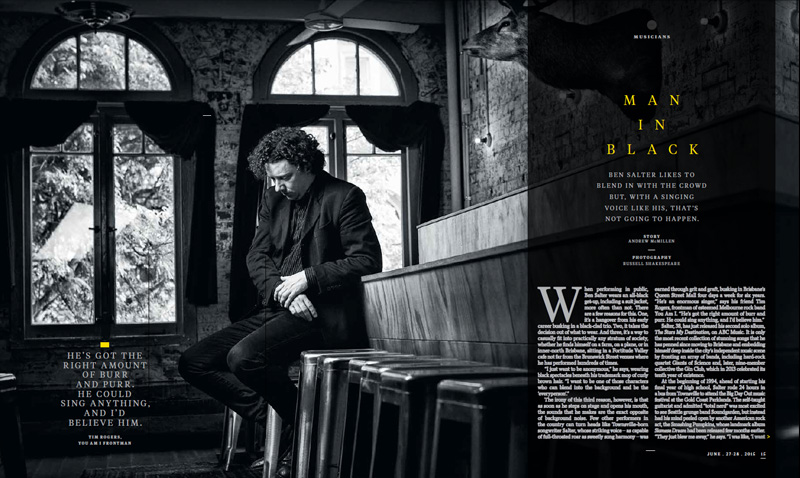
 The album’s final track, ‘No Security Blues’, is a darkly humorous ode to Salter’s comparative wealth, despite the challenges of earning a living through voice, pen and guitar. “I have 99 problems,” he sings. “But they are not real problems.”
The album’s final track, ‘No Security Blues’, is a darkly humorous ode to Salter’s comparative wealth, despite the challenges of earning a living through voice, pen and guitar. “I have 99 problems,” he sings. “But they are not real problems.”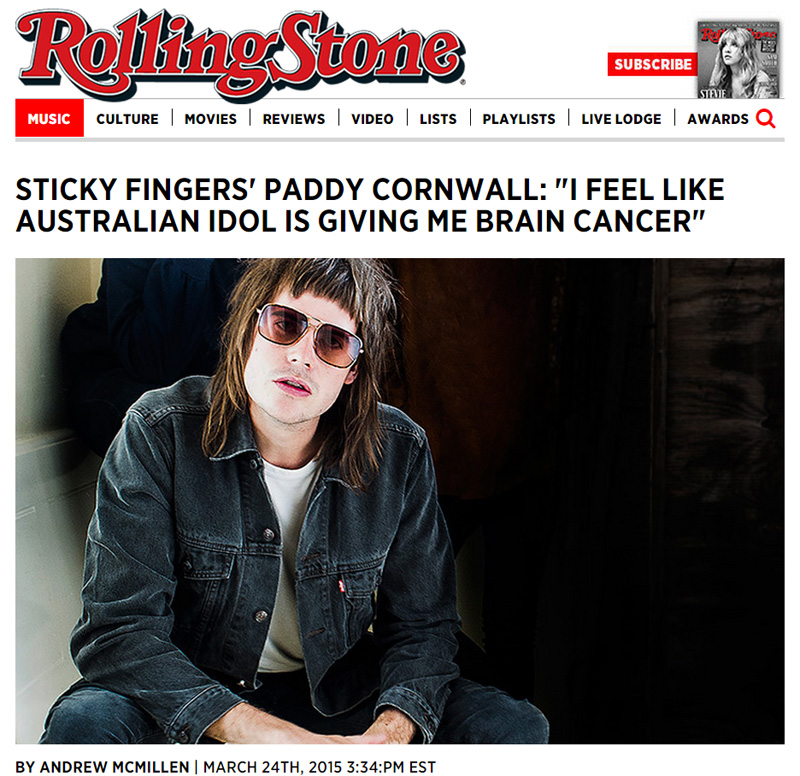


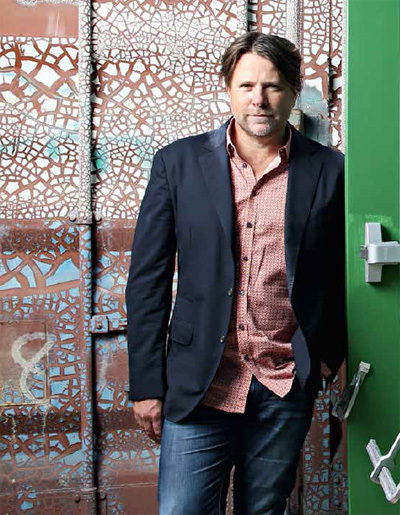 As we walk downstairs, I ask Collins what’s at stake here. “My reputation,” he replies. “And a bit of money. I’ve willingly put my name and my hand up to back this project. If it doesn’t work, my partners can walk and do another one, whereas I’ll go down with the ship. Obviously I’ve put a lot of time, energy and passion in, and I’d like it to work financially, too.”
As we walk downstairs, I ask Collins what’s at stake here. “My reputation,” he replies. “And a bit of money. I’ve willingly put my name and my hand up to back this project. If it doesn’t work, my partners can walk and do another one, whereas I’ll go down with the ship. Obviously I’ve put a lot of time, energy and passion in, and I’d like it to work financially, too.”



 I
I 
